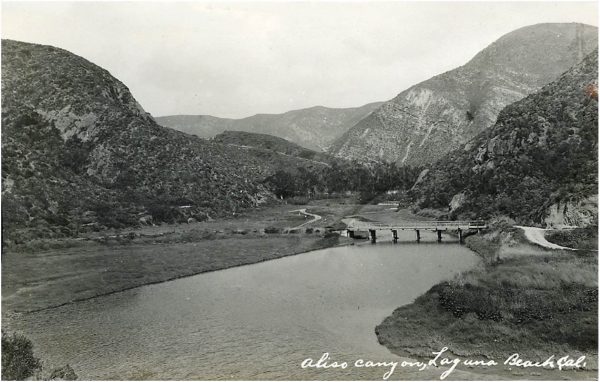By Rita Robinson, Special to the Independent
Currently filled with sludge, bacteria, fertilizers, run-off and other pollutants that severely limit a healthy diversity of native plants and wildlife, the Aliso Creek lagoon is another step closer to recovery as a burgeoning aquatic wetland.

The mission to restore the Aliso Creek estuary, spearheaded by Laguna Ocean Foundation two years ago, received a second gift from the California Coastal Conservancy this holiday season, a $400,000 grant to implement the plan’s next phase.
The estuary, located where Aliso Creek meets the ocean at Aliso Beach in South Laguna, now serves as a thoroughfare for raging urban run-off in times of rain or high water usage, or a sometimes-smelly, desolate hole during stretches of hot weather.
This second-phase funding will carry it through the California Environmental Quality Act (CEQA) of public review and ready it for the next phase of environmental impact analysis, said Ed Almanza, vice chair of the Laguna Ocean Foundation’s Board of Directors.
“It’s not only a long process, it’s permanent,” said Almanza of the final outcome. “[The estuary] has a life of its own once it gets going.”
Aliso Creek lost its natural tidal exchange with the ocean when its marshlands were restricted and reduced by a concrete channel and a 76-car overflow parking lot that accommodates visitors to Aliso Beach. The plan calls for removing the concrete channel and restoring riparian habitat there, as well as demolishing the parking lot. The lot will be relocated along Village Lane with parking spaces on adjacent South Coast Water District property that leads into The Ranch resort and golf course.
“There’s not a big enough area there now for the estuary,” said Irene Bowie, Laguna Ocean Foundation board member. “It really is the force of the stream coming through.”
When the area is widened and the estuary restored, the marshlands work like a sponge, soaking up impurities, filtering the water and restoring the natural balance for wildlife, she said. “Then the natural process would take place like it used to. The tide and the surf would come in and infuse the area with saltwater with the occasional berm to shore up the lagoon, but not all the time. It would go back to its natural flow,” said Bowie.
Almanza said he sees no opponents to the plan.
There are still many things to consider, he said. Further funding is only one of them. “I don’t think the funding will hold it up,” said Almanza. “There are lots of things to deal with between now and completion. It’s not simply a question of funds. It’s a question of aligning all the partners and getting permits.”
Laguna Ocean Foundation spent the first grant of $300,000, also from the California Conservancy and anonymous donors, to implement the first step, a technical report by ESA, an environmental science and planning firm. ESA evaluated the current state of the estuary and provided the outcomes of various options to restore it to its natural state.
“The first step, the Conceptual Restoration Plan, determined that restoration was feasible and how we go about it. So it was very important,” said Almanza. “The second step gets closer to actually implementing the plan and determining how it happens on the ground. So it’s a sequence of events that seems natural to a project like this.”




